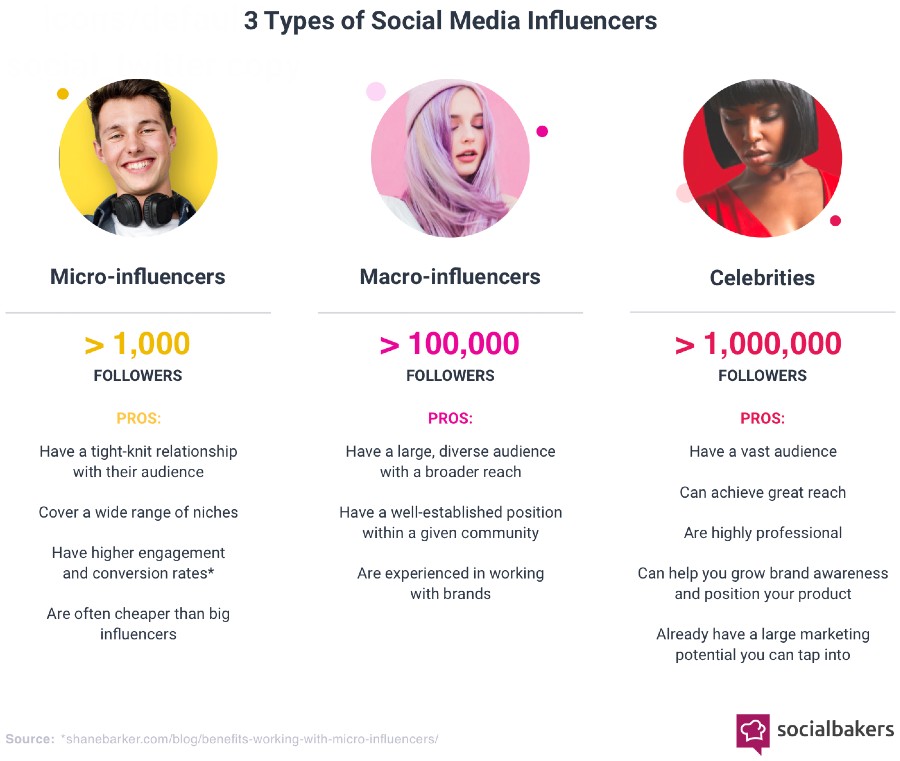Micro-Influencers: Maximizing Brand Engagement through Niche Communities
Meta Description: Learn how to harness the power of micro-influencers to optimize brand engagement within niche communities. Discover strategies, case studies, and actionable insights for successful influencer collaborations.
In the digital marketing landscape, understanding the nuances of consumer engagement is crucial. As brands compete for the attention of audiences in increasingly saturated markets, developing innovative strategies that foster authentic connections has never been more important. Enter micro-influencers—individuals with follower counts between 1,000 and 100,000 who specialize in specific niches, effectively engaging dedicated audiences. My name is Leila Krantz, and with over five years of experience in SEO and influencer marketing strategies, I've collaborated with multiple brands to enhance their outreach and engagement through tailored approach, particularly focusing on micro-influencers.

What are Micro-Influencers?
Definition: Micro-influencers are social media users who have established a modest yet highly engaged following. Unlike traditional influencers, these individuals often focus on specific interest areas, allowing brands to reach unique audiences that resonate with their messages and products.
The Impact of Micro-Influencers
- Engagement Rates: It’s noteworthy that micro-influencers often achieve engagement rates between 3-10%, compared to the mere 1-3% typical of influencers with larger followings. This difference is due to their ability to connect genuinely with their audience.
- Trust Factor: A 2020 study revealed that 61% of consumers trust influencer recommendations, particularly those from smaller creators who appear more relatable. As consumers increasingly seek authenticity, this trust translates into higher engagement and conversion rates.
Understanding Engagement Metrics
Utilizing micro-influencers helps brands navigate the complex terrain of audience engagement. Here are crucial metrics to consider when evaluating the effectiveness of micro-influencer campaigns:
Real-World Data
- Brands that engage micro-influencers often experience significant boosts in performance. For instance, one brand reported a 40% increase in engagement following a partnership with a micro-influencer.
- Sales Growth: Leveraging micro-influencers can lead to notable increases in sales. A well-documented instance is the beauty brand Glossier, which successfully harnessed micro-influencer campaigns to achieve skyrocketed growth and brand loyalty.

Examples of Successful Campaigns
| Campaign Name | Brand | Results | Strategy |
|---|---|---|---|
| Daniel Wellington Watch | Daniel Wellington | Over 1 million Instagram followers, high ROI | Engaged a network of micro-influencers who shared authentic content with their loyal followers. |
| Glossier Community | Glossier | Brand loyalty engagement through micro-influencers | Created community-focused campaigns promoting user-generated content. |
Finding the Right Micro-Influencers
Identifying micro-influencers that align with your brand's values and target audience is critical for campaign success.
Tools and Platforms
- Leverage tools like BuzzSumo
 , Upfluence, and AspireIQ. These platforms assist in identifying micro-influencers based on niche, engagement rates, and audience demographics.
, Upfluence, and AspireIQ. These platforms assist in identifying micro-influencers based on niche, engagement rates, and audience demographics.
Qualitative Metrics
- When evaluating potential influencers, consider their connection with their audience, content quality, and overall engagement rather than just follower count. A micro-influencer with a smaller audience may yield greater engagement than someone with a vast following.
Measuring Campaign Success
To assess the impact of your micro-influencer campaigns, focus on the following Key Performance Indicators (KPIs):
- Engagement Rates: Analyzing likes, shares, comments, and overall interaction.
- Website Traffic: Tracking the number of visitors directed from influencer posts.
- Conversion Rates: Measuring how many influencers' referrals led to sales or other desired actions.
Tools for Tracking Success
- Make use of Google Analytics or social media analytics tools to monitor the performance of your campaigns, providing insights that inform future strategies.
Building Authentic Communities
Authenticity is paramount in today’s marketing landscape. Micro-influencers can help foster communities around shared interests, making brand advocacy feel organic and genuine.
User-Generated Content (UGC)
Encourage micro-influencers to create and share UGC. This method not only amplifies your reach but also builds community. For example, the #MyCalvins campaign from Calvin Klein successfully engaged customers by inviting them to share their content while wearing the brand's products.
Trends in Influencer Marketing
Understanding the broader trends within influencer marketing can help brands strategize effectively.
Market Growth Statistics
The influencer marketing landscape is projected to reach over $15 billion by 2022, with micro-influencers playing a pivotal role in this growth.
Changing Advertising Dynamics
As consumers move away from traditional advertising towards more organic influencer recommendations, brands must adapt. Incorporate micro-influencers into your strategy to align your messaging with the evolving preferences of consumers.
Demographic Insights
Audience Reach is another essential factor when it comes to micro-influencers. Research identifies that these influencers serve niche communities, with their effectiveness particularly significant among specific demographics.
Key Demographics
- Younger consumers (ages 18-34) are more likely to engage with micro-influencers, often seeking authentic connections and relatable content.
Next Steps for Brands
Ready to delve into the world of micro-influencers? Here's a tactical approach for brands looking to maximize their engagement through niche communities:
- Start Small: Initiate your micro-influencer strategy by collaborating with a few individuals within your market niche.
- Build Relationships: Focus on developing genuine relationships with micro-influencers to foster brand loyalty.
- Monitor Trends: Continuously keep an eye on industry trends and adapt your strategies accordingly.
Incorporating micro-influencers into your marketing strategies will not only enhance brand engagement but also cultivate thriving communities around your offerings. By embracing this approach, you can build relationships that resonate deeply with your audience while driving impactful business results.
Lastly, if you found this discussion valuable and wish to stay updated on the latest in influencer marketing and more, feel free to explore further content or sign up for our newsletter for continuous insights and strategies.
